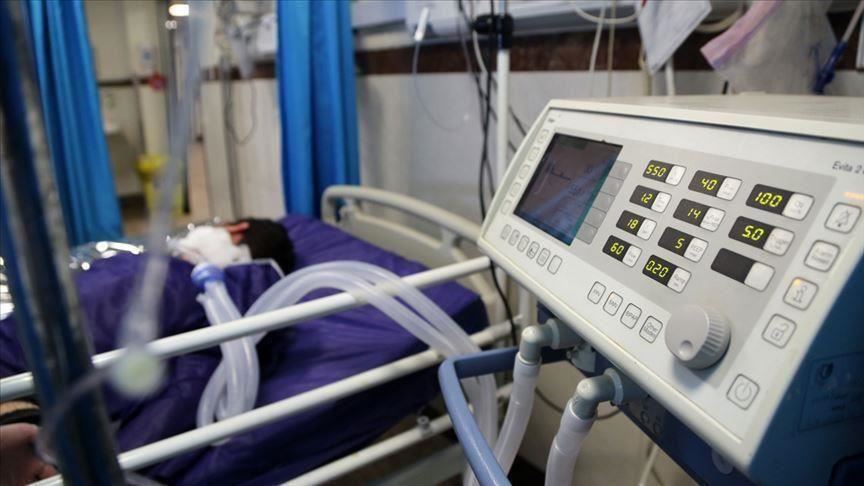
COVID-19: Mishandling of infected dead bodies spell anxiety in India
New guidelines call for cremating bodies at high temperature in electric crematoria or plastering graves with cement
NEW DELHI: Even as India announced a complete lockdown on Tuesday to stem the spread of novel coronavirus or COVID-19 pandemic, the management of infected dead bodies and their funerals remain a source of concern in the country.
Experts believe that the Health Ministry’s detailed guideline issued last week regarding the handling of infected dead bodies has huge gaps. Even at times, there is dereliction to follow these guidelines as well.
In India’s eastern province of Bihar, family members kept a coronavirus infected dead body at their home for paying last respects. It later led authorities to force the whole village in Munger district to go into quarantine.
The patient had died on Saturday morning, but test reports confirmed his infection only on Sunday after his death.
Similarly, in national capital Delhi confusion reigned supreme last week, after first coronavirus victim died. His body was taken to Nigambodh Ghat crematorium located on the banks of River Yamuna. For want of clarity, authorities kept family members along with the dead body waiting for several hours, before directing them to an electric crematorium.
As the COVID-19 cases in India have reached 562 with 10 deaths, medical experts are questioning the preparedness and absence of proper guidelines and protocols for handling dead bodies.
Doctors at the hospital, where the patient from Bihar died said he was in complete isolation and at the time of death was not a confirmed coronavirus patient.
COVID-19 in Pakistan: Fill the gaps or brace for impact
“We handed his body to the family, wrapped in a plastic bag, as mentioned in the government’s protocol,” said Prabhat Kumar, managing director at the All India Institute of Medical Sciences, a premier hospital at Patna, the provincial capital of Bihar, while speaking to Anadolu Agency.
The provincial Health Secretary Sanjay Kumar said the hospital was squarely blamed for the mismanagement.
“The hospital management should have followed the protocol and waited for the test result of the deceased, before handing corpse to the family,” he said.
Three months after the outbreak, China’s Infection Control Branch of the Department of Health issued 24-page guidelines for handling and disposal of dead bodies.
The guidelines issued on Feb. 20 and now accepted globally have specified the thickness of the leakproof plastic bag. According to guidelines, the body bag should not be less than 150 microns and should accompany with another layer of a mortuary sheet or opaque bag.
Perpetual danger of transmission
In India as well, the Indian Council for Medical Research (ICMR) way back in 1987 had stipulated double plastic bagging of the dead body affected with diseases like HIV.
Speaking to Anadolu Agency, Dr T. Jacob John, a former head of the Virology Centre at the ICMR said the plastic bag covering the body should be at least 100 microns thick, so it does not tear off easily.
“Otherwise, with the current vague guidelines, there are high chances that a low-quality polythene bag will be used,” he said.
The seven-page guidelines, issued by the Health Ministry last week also does not specify the method of cremation or the plastering of graves.
Since the majority of India’s Hindu population cremate bodies in open spaces or along the river banks, experts say, there are perpetual dangers of the transmission of infection. They say the preferred method of consuming the infected dead body was to use the electric or CNG-run crematoria. But there is a shortage of such crematoria in the country.
“There guidelines lack clarity. All institutions, burial grounds, and crematoria should have been handed over details handy,” Anant Bhan, a global health expert, told Anadolu Agency.
“Community leaders should be sensitized about these protocols like specifications of body bags etc. to avoid hurting the sentiments. The clearer the guidance, the smoother the process. Also, there are fewer electric crematoria in the country. These issues need to be addressed," said Bhan, who is also an adjunct professor at the Yenepoya University in Karnataka.
AIIMS issues own guidelines
The Department of Forensic Medicine and Toxicology at the All India Institute of Medical Sciences in Delhi has released its specific protocol, which mentions points missed in the guidelines issued by the Health Ministry.
Speaking to Anadolu Agency, Head of the Department Dr. Sudhir Gupta confirmed that the guidelines have been drafted. He hoped that the Health Ministry updates its guidelines to allow safe management of infected dead bodies.
“For last rites, cremation should be preferred for the complete elimination of chances of infection in either electric or gas crematorium in a zipped body bag. However, keeping in mind the religious views of the family, if the burial of the body is requested, then it should be assured that the body is buried in a thick, airtight coffin, “said the new protocol.
Giving further details, it says that the body needs to be buried at a depth of 4-6 feet and should be cemented immediately as an additional precautionary measure.

1737028779-0/sidra--(100)1737028779-0-270x192.webp)
1737027357-0/sidra--(99)1737027357-0-270x192.webp)
1737026125-0/Tribune-N-(6)1737026125-0-270x192.webp)
1737025781-0/sidra--(98)1737025781-0-270x192.webp)
















COMMENTS
Comments are moderated and generally will be posted if they are on-topic and not abusive.
For more information, please see our Comments FAQ